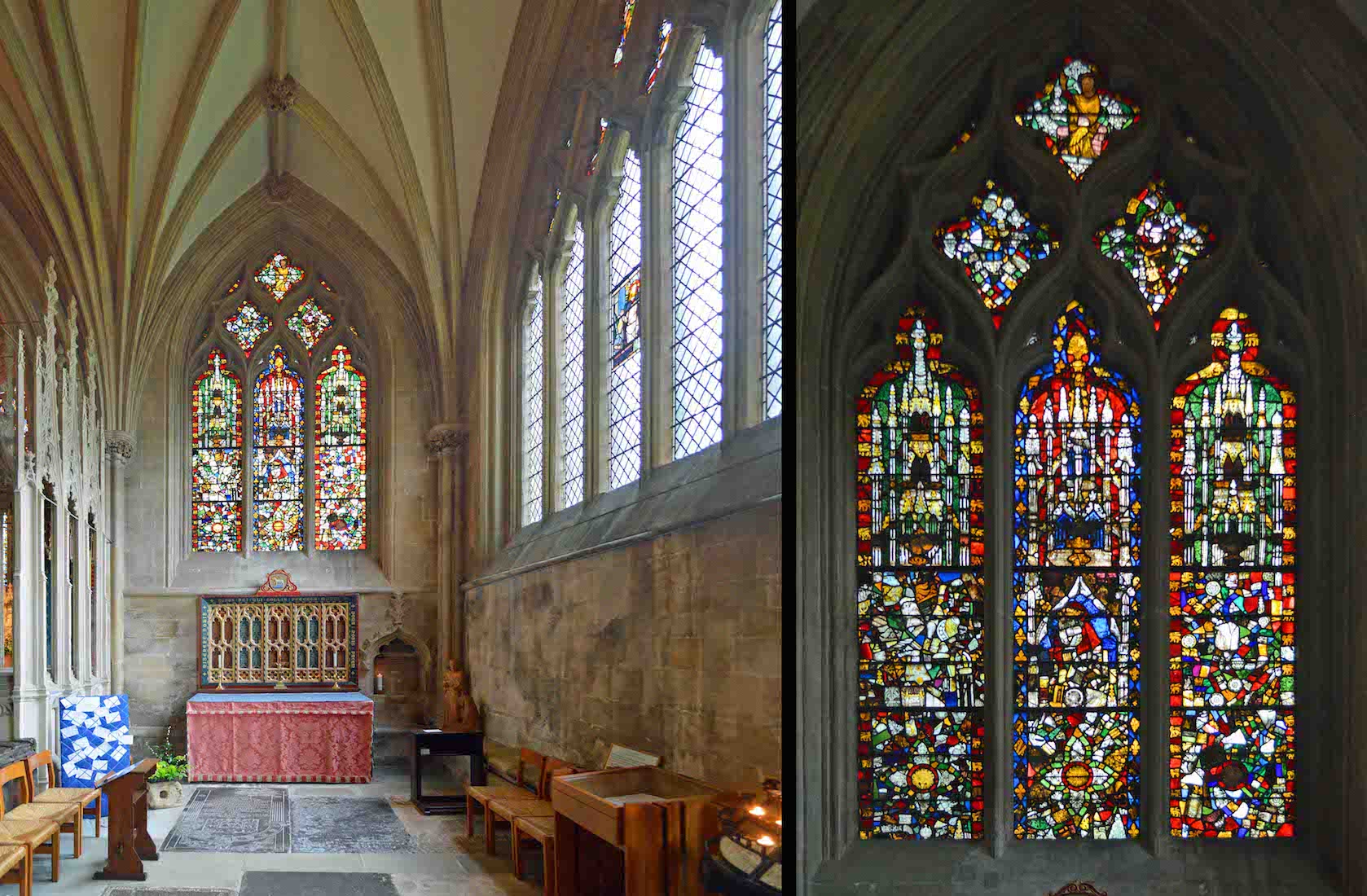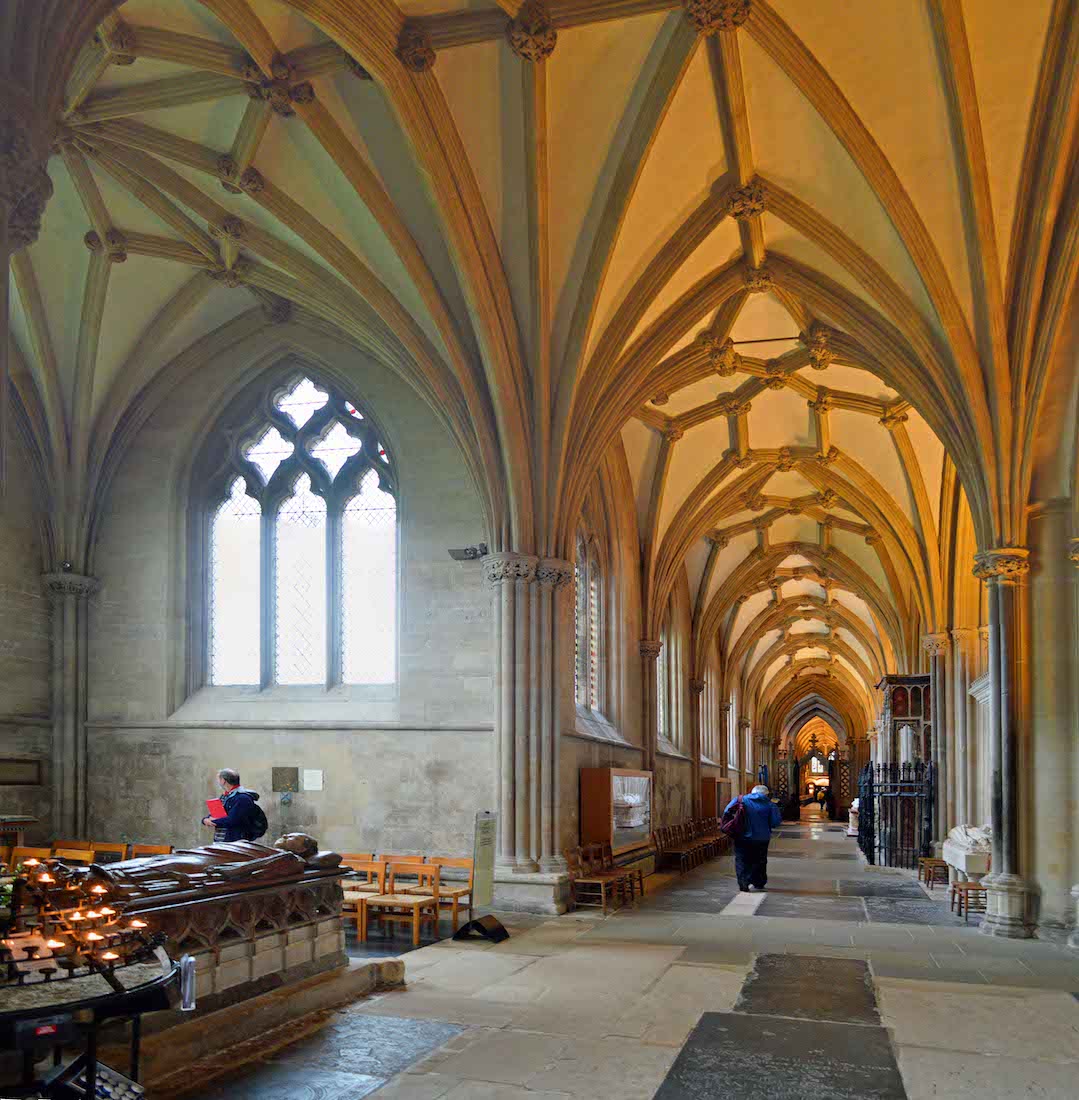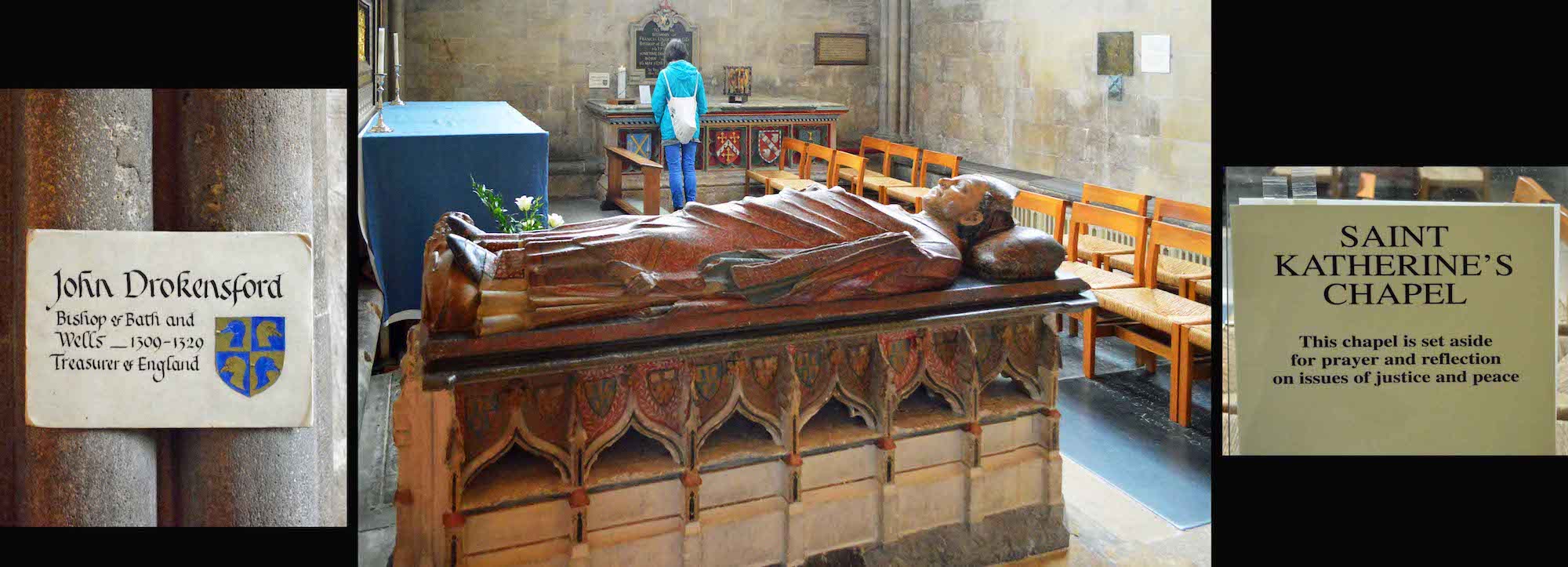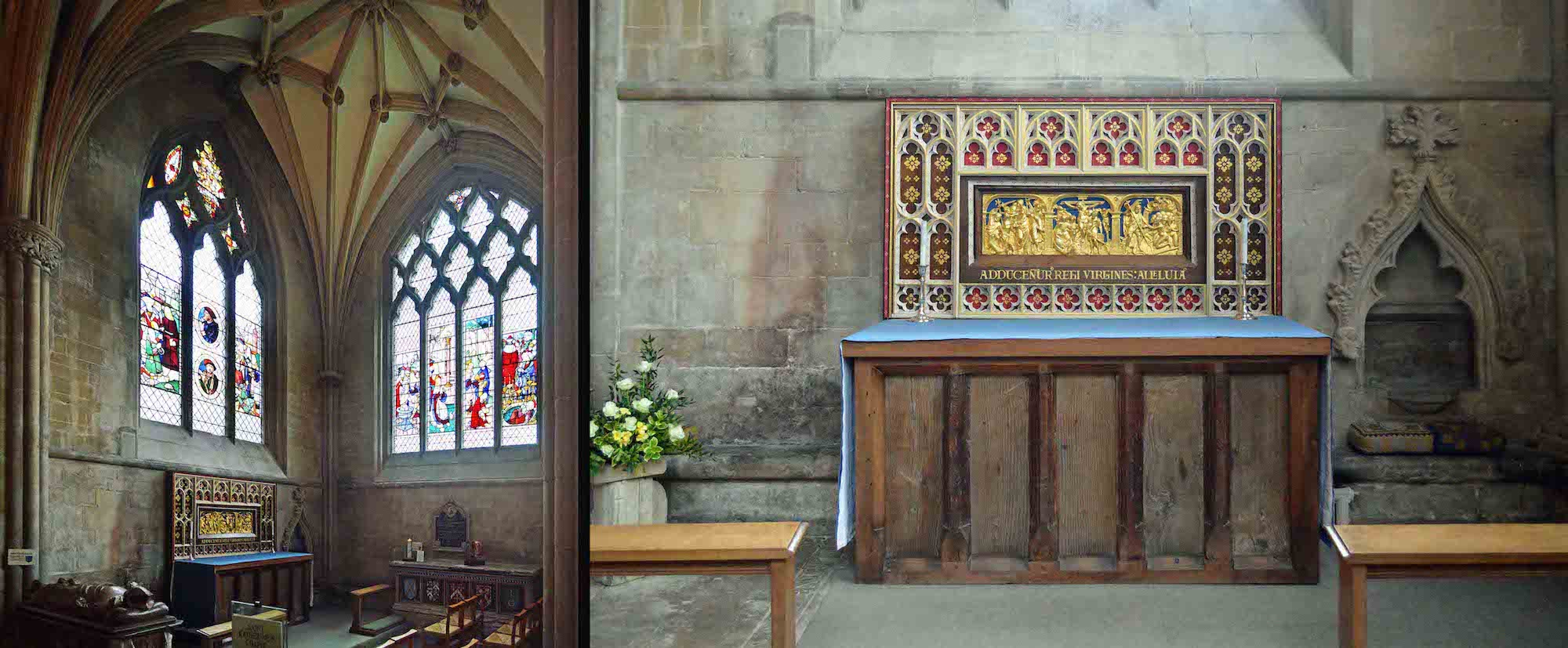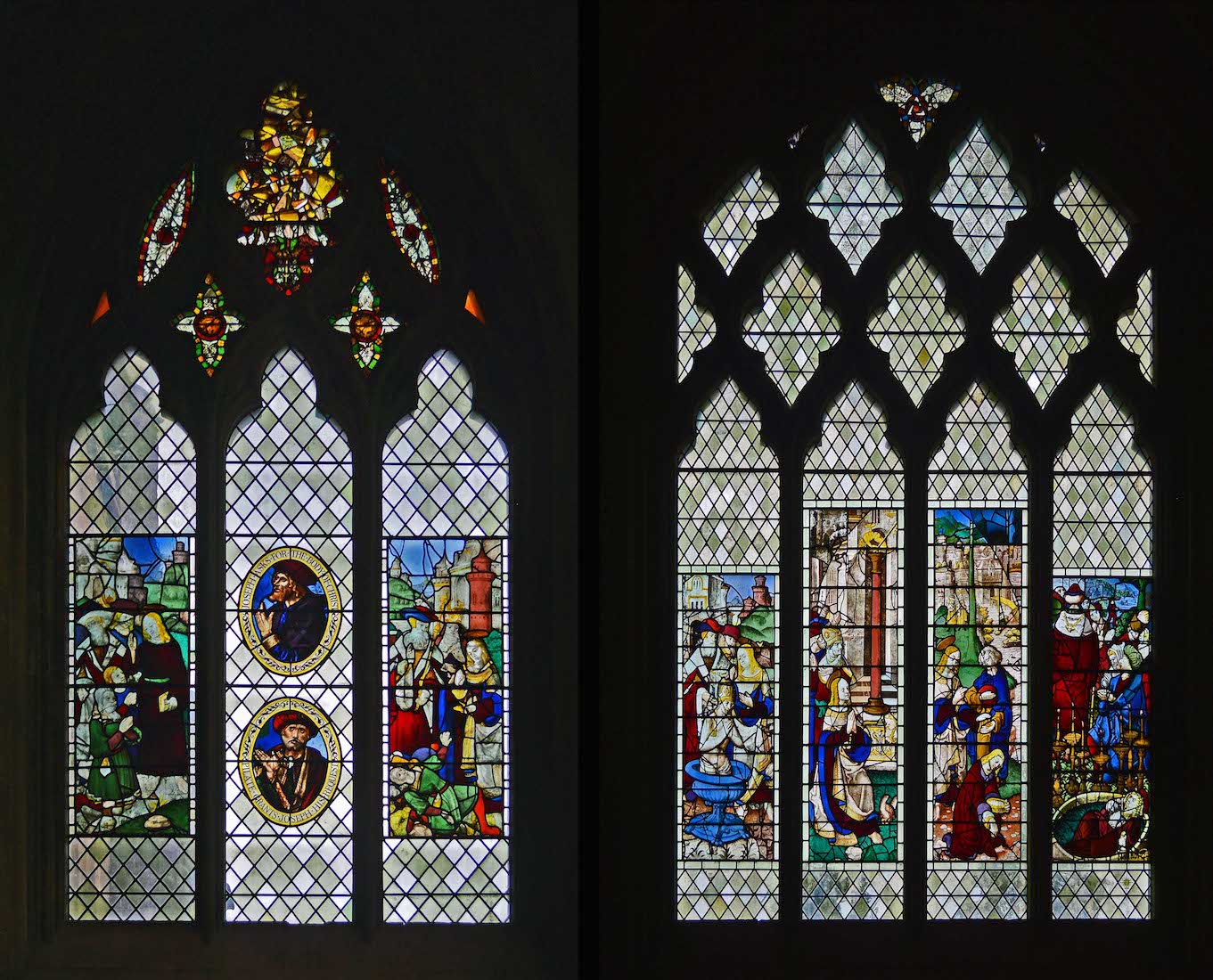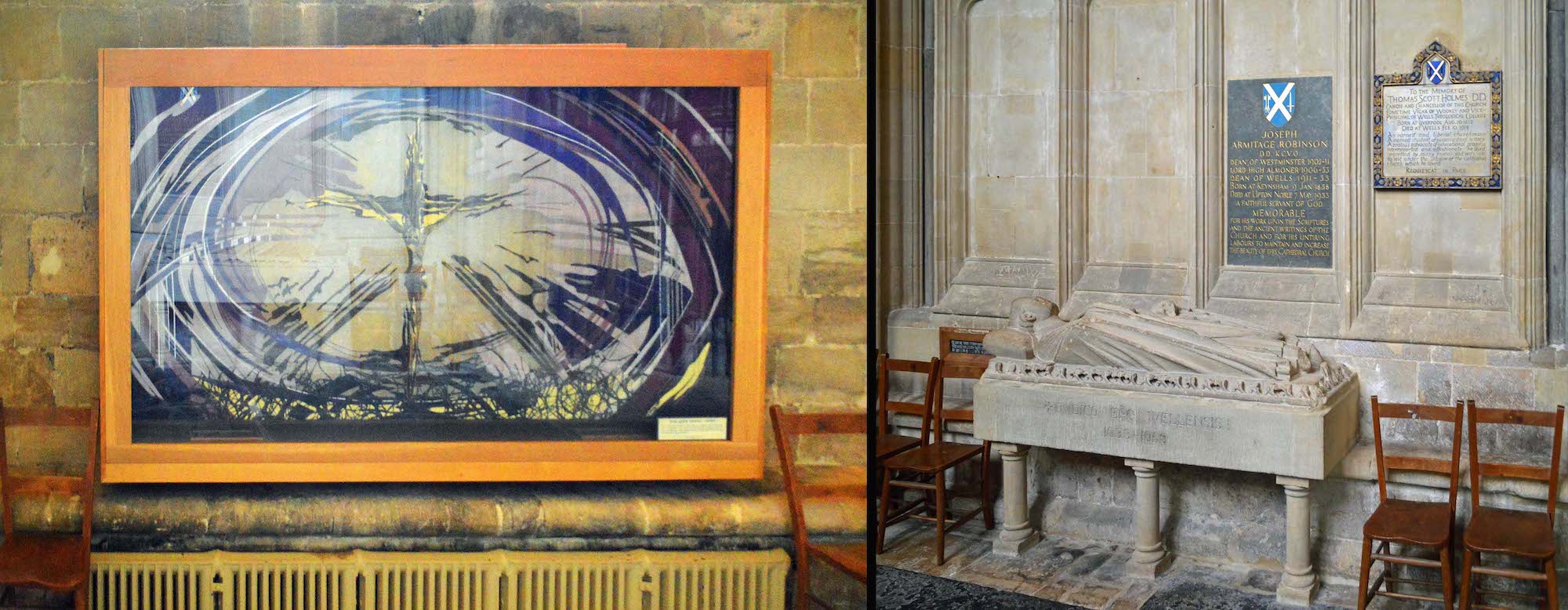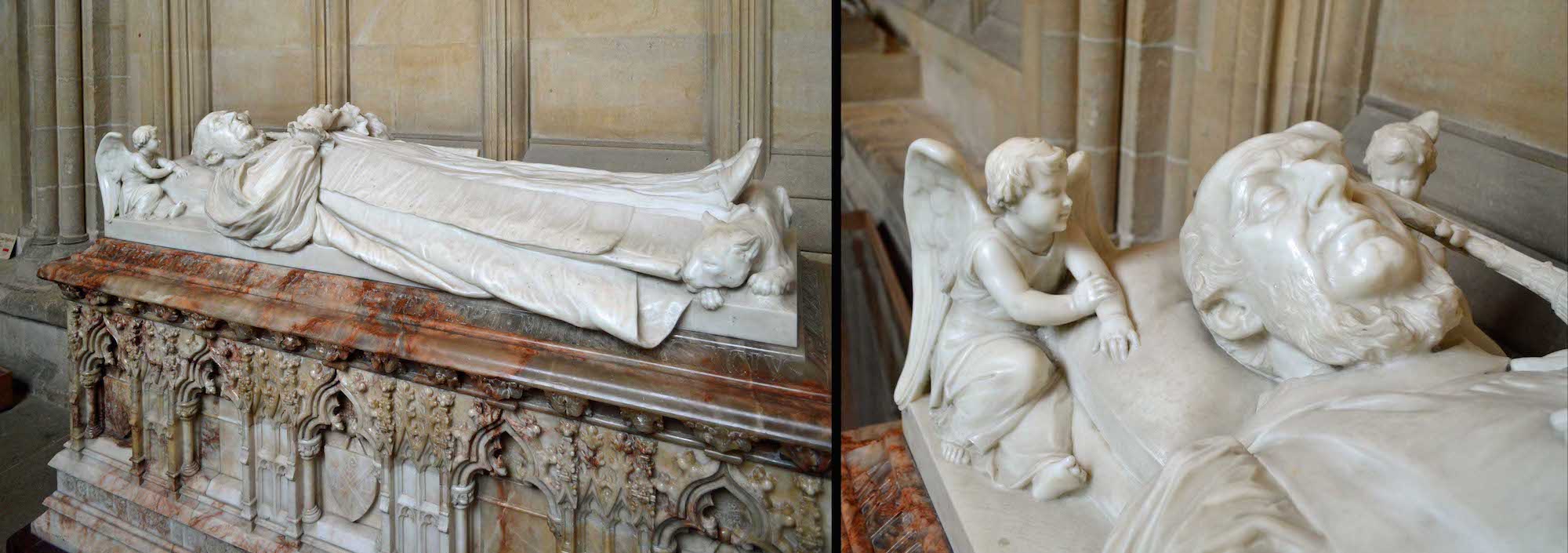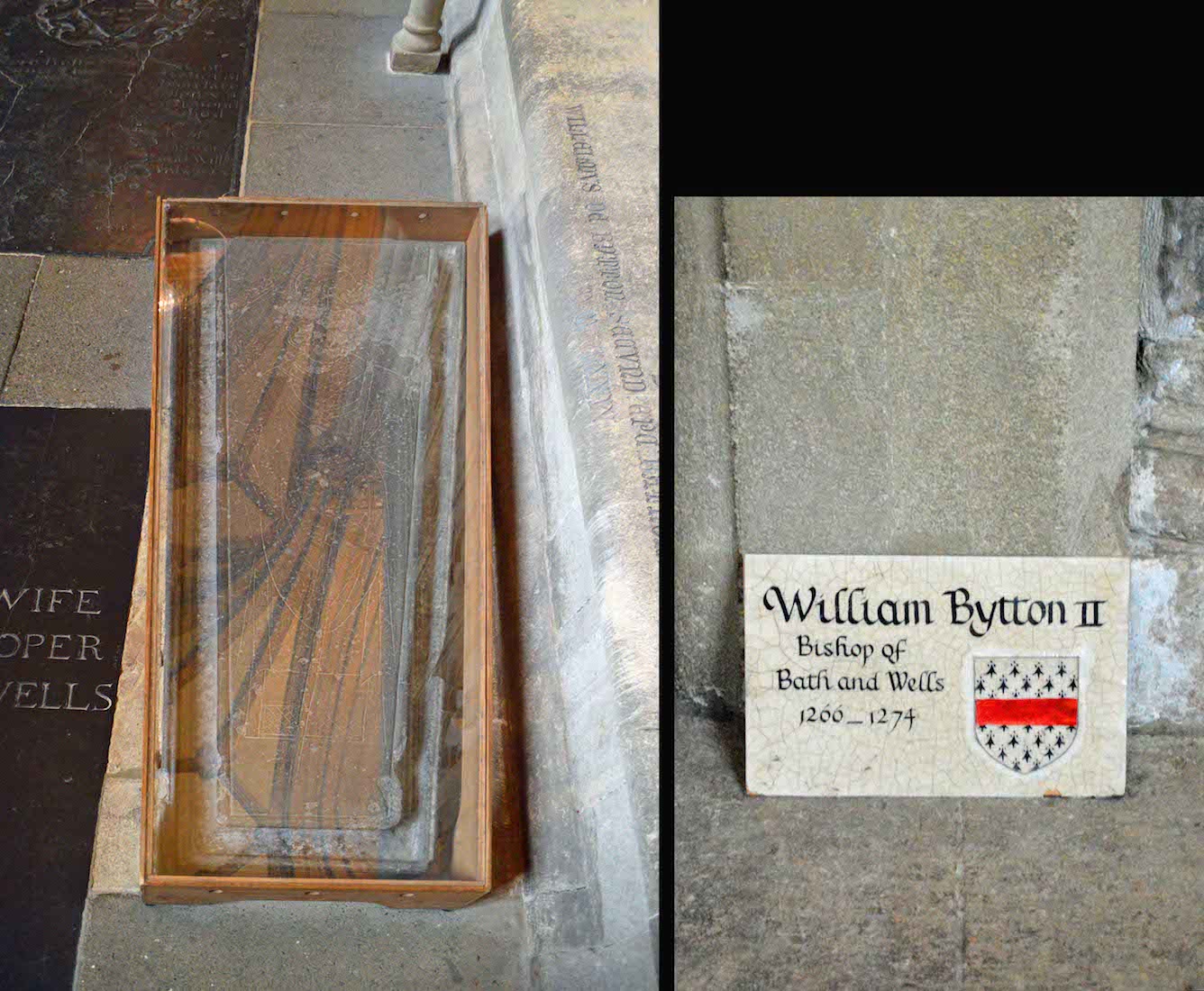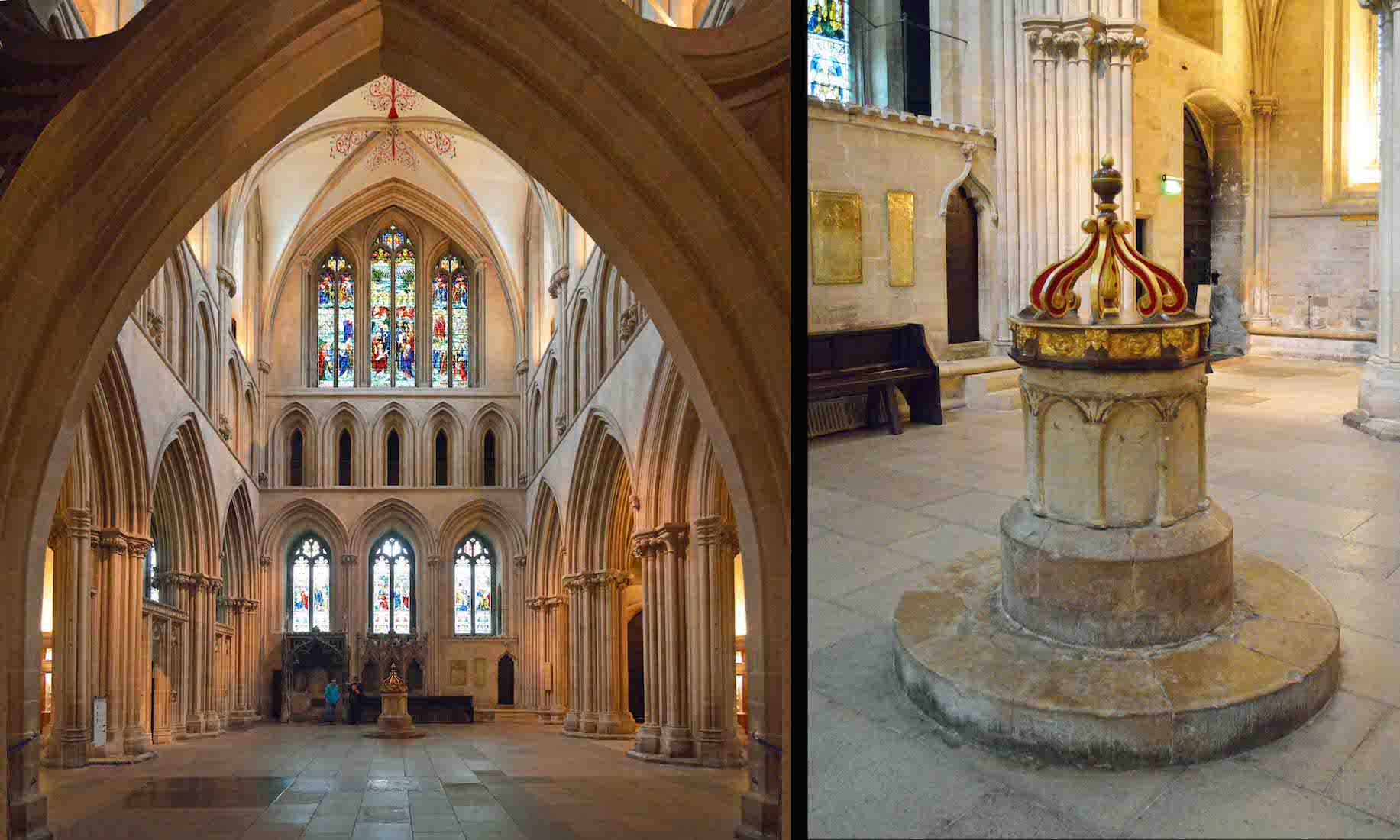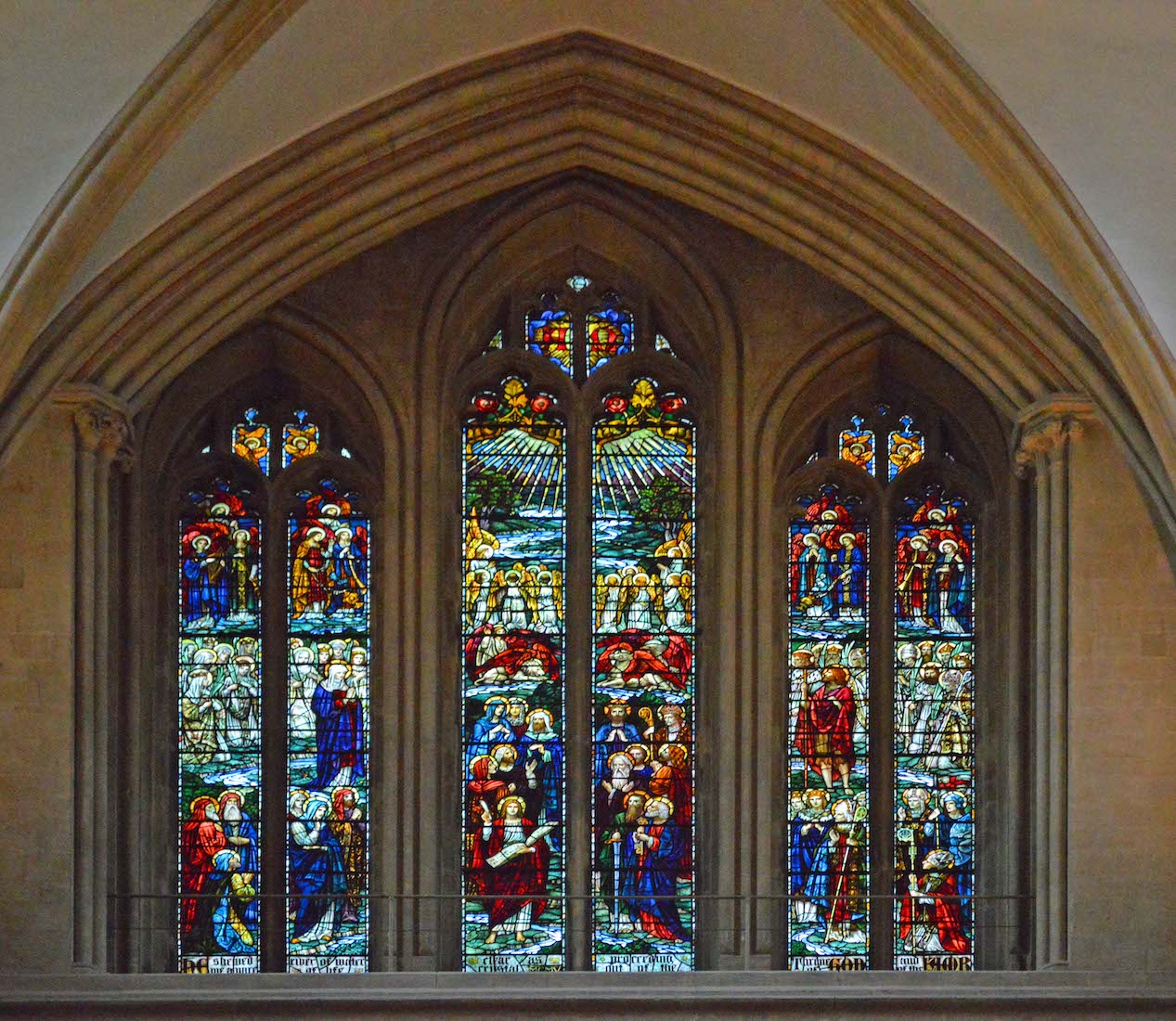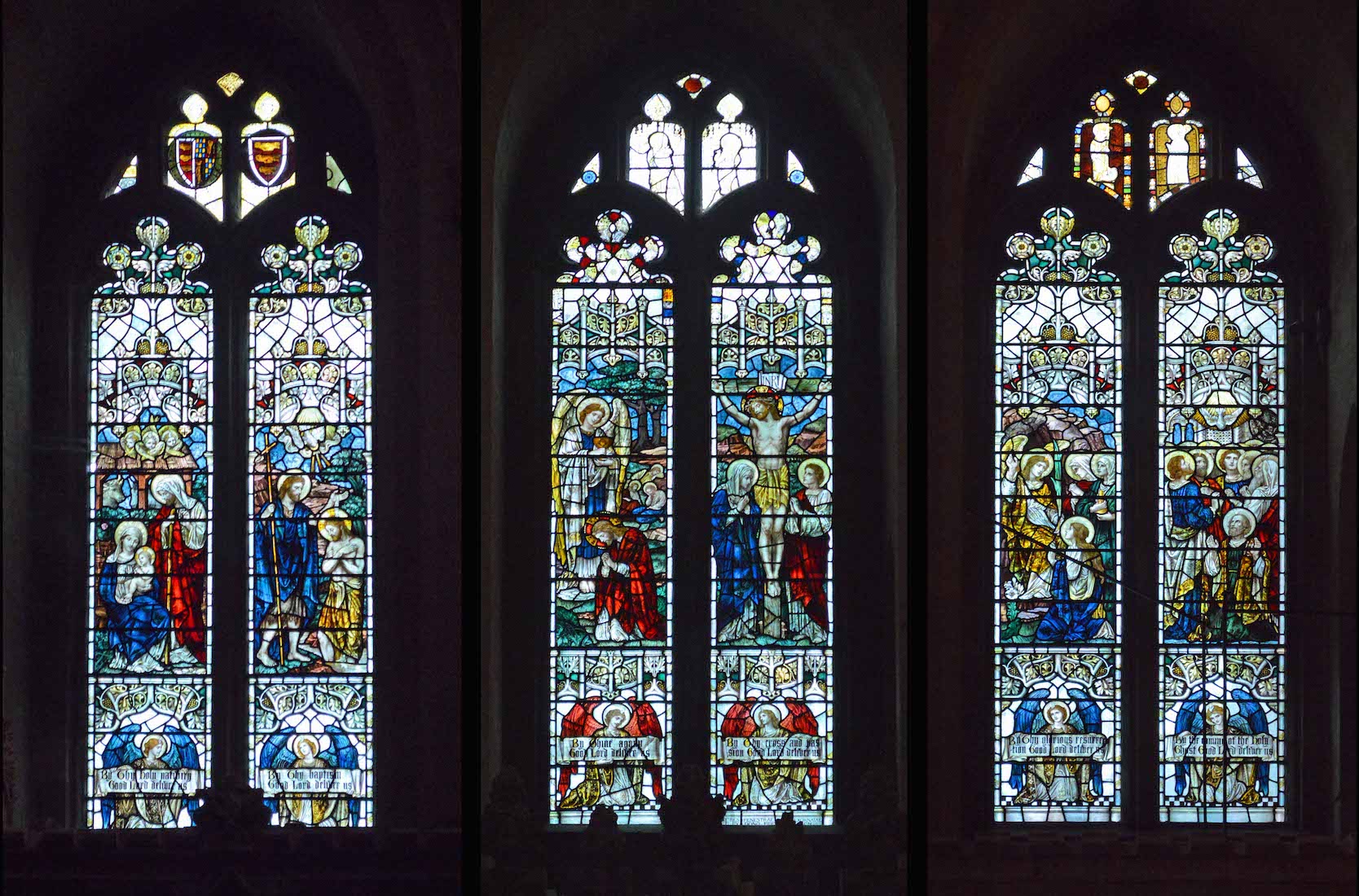61. LADY CHAPEL STAR
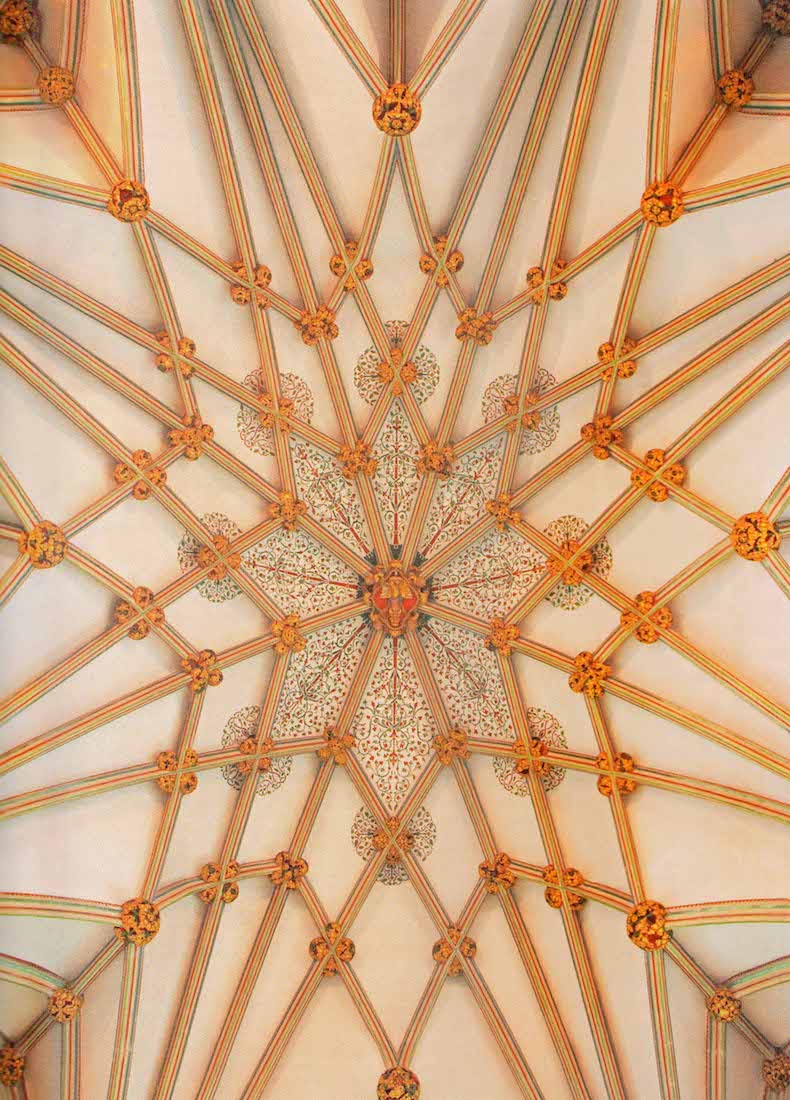
The Lady Chapel has a vault of complex and somewhat irregular pattern, as the chapel is not symmetrical about both axes. The main ribs are intersected by additional non-supporting ribs known as ‘lierne ribs’ and which in this case form a star-shaped pattern at the apex of the vault. It is one of the earliest lierne vaults in England. PLAN
62. SCREEN AND ALTAR
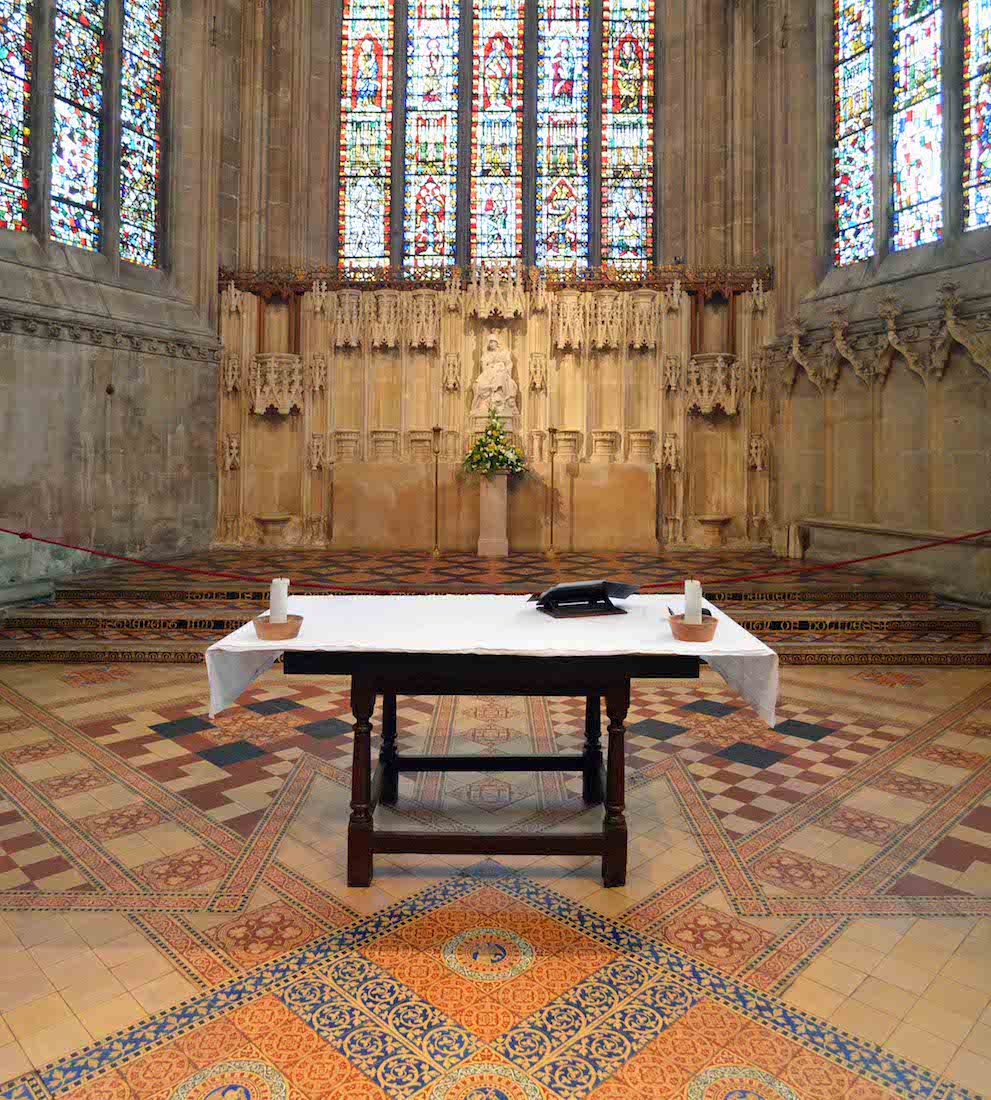
The Lady Chapel has a carved screen below the East window with the Virgin Mary and the Child Jesus under the central canopy. There is no ‘altar’ as such, but a separate table fills the function. Notice too the interesting floor tiling.
63. REAR OF THE LADY CHAPEL
There are several items of interest at the rear of the Lady Chapel. The unusual 1661 brass lectern has a moulded stand and foliate crest, and is supported by miniature lion feet. The text shows that the lectern was given to the Cathedral by Dr Robert Creyghton. On the wall behind is a line of small Stations of the Cross. And on the rear South side of the Lady Chapel stands a large black cope chest, used for storing priestly vestments.
64. STATIONS OF THE CROSS
In 2000, Silvia Dimitrovs, a Bulgarian artist in residence at Wells Cathedral was commissioned to paint the fourteen Stations of the Cross as a project for the Millennium. Traditionally the Stations of the Cross have been used as an aid to devotion for pilgrims, particularly around the Easter period.
65. SOUTHEAST CHAPEL
The general layout of this Southeastern chapel is a reflection of the Northeastern chapel. At right is a clear lattice window with a single insert, and the Eastern window is again a jumble of medieval glass pieces. Behind the altar is an interesting small reredos with the words (in Latin): Lamb of God, who takes away the sins of the world, have mercy upon us. An image of the Lamb with banner surmounts this. A wooden statue (of Christ?) stands in the right corner.
66. WINDOW INSERT AND MISERICORDS
The curious inset of Christ after the crucifixion is again made up of old pieces of glass. As we turn and leave this chapel, walking West along the South quire aisle, this set of misericords is on our right, near the end of the Stations of the Cross. Misericords were wooden supports attached to the underside of the quire stalls, to assist monks during long periods of standing. They portrayed subjects ranging from the sacred to the quite irreligious!
67. SOUTHEAST TRANSEPT AND SOUTH QUIRE AISLE
On our left now is the small Southeast transept, and the South quire aisle stretches out before us. In this quire aisle at the near left is a large wooden frame with a heating unit beneath, and on the near right is an effigy. We return to these in #71.
68. ST KATHERINE’S CHAPEL
The transept has been designated St Katherine’s Chapel. Along the front is the tomb chest and effigy of John Drokensford who was Bishop of Bath and Wells from 1309 to 1329, and also briefly in 1297, Treasurer of England. Beyond the tomb we see the Chapel altar at left, and an impressive side altar ahead.
69. CHAPEL ALTAR
From this angle we see the East and South windows of the chapel, and the placing of the two altars. The Eastern altar has an intricate reredos. The text is derived from Psalm 45:15-16. ‘Adducentur regi virgines post eam; proximae ejus afferentur tibi. Afferentur in laetitia et exsultatione; adducentur in templum regis.’ This translates to: ‘She is led to the king, with the young women, her friends. With joy and laughter shall they be brought to you! a grand entrance to the king's palace!’.
70. CHAPEL WINDOWS
The East and South chapel windows shown here are similar in style. The central panel of the window at left reads: ‘Joseph asks for the body of Christ’; ‘Pilate grants Joseph his request’ – obviously references to Joseph of Arimathea after the crucifixion.
71. RETURN TO THE SOUTH QUIRE AISLE
We return to the South quire aisle. On our left is an abstract painting of the crucifixion. To our right is the effigy and tomb chest of Bishop Dudico who was bishop of Wells from 1033 until his death in 1060.
72. BEKYNTON CHANTRY
Further along the aisle on the North side, we come to the Bekynton Chantry. Thomas Beckington (also spelt Beckynton; c. 1390 – 1465) was Bishop of Bath and Wells and King’s Secretary in medieval England. Beckington has an unusual monument: his effigy is depicted twice. The lower effigy depicts his decaying corpse whilst unwrapped from its shroud, and the upper effigy depicts him in his bishop’s attire. When his tomb was opened during Victorian times he was found to be buried very simply with just one ornament: his bishop’s ring. This was removed and is now in a museum.
73. BISHOP HERVEY EFFIGY
Beyond the chantry on the North side is the effigy of Bishop Hervey. Lord Arthur Charles Hervey (1808 – 1894) was an English bishop who served as Bishop of Bath and Wells from 1869 to 1894. He was usually known by his aristocratic courtesy title, ‘Lord’, rather than the style appropriate to a bishop, ‘the Right Reverend’. In the 1870s, one of Hervey’s daughters trained the mute swans in the five sided moat at the Bishops Palace to ring bells, by pulling strings, to beg for food.
74. BISHOP BYTTON FLOOR SLAB
The nearby floor slab remembers William of Bytton II (died 1274) who was a medieval Bishop of Bath and Wells. Hhe was the nephew of William of Bytton (I) (died 1264) who was also a medieval English Bishop of Bath and Wells. He, like his uncle, mainly worked in his diocese, and regulated the liturgical life of his cathedral and endowed the cathedral with some property.
75. FURTHER EFFIGIES
The central view shows the South quire aisle looking East. The Bytton floor slab is clearly visible, and beyond, the Bishop Hervey effigy and the Bekynton Chantry. At left are pictured the remaining three effigies along the North wall of the aisle. These are of Bishop Burwoldus, Bishop Eliwinus (997 – 999), and an unnamed Saxon bishop. At right is the effigy of John Harwell on the South side. He was Bishop of Bath and Wells ifrom 1366 until his death in 1386.
76. SOUTH QUIRE AISLE WINDOWS
With the exception of the central window, the five windows of the South quire aisle are in the clear lattice style with decorated apexes. In the depicted outer apexes is a crucifixion scene, and worshiping angels. The central window has a number of rectangular inserts of various coats of arms.
77. SOUTH TRANSEPT
Leaving the South quire aisle we come to the South transept, seen here framed by one of the three scissor arches. The vaulting is decorated with the same little painted pattern we noticed in the nave. The sides of the transept are lined by Gothic arches, and the central area is bare apart from the old Saxon font. This is the oldest object in the present Cathedral, having been transferred from the Saxon church, and now possessing a 17th century cover. It has been used for Christian baptism for over a thousand years.
78. TRANSEPT WALLS
From left we see here: the South quire aisle, arches through to the Saint Calixtus and Saint Martin Chapels, the South wall with its windows and monuments and the font in front, some display and a stained glass window to the West, and the South aisle of the nave.
79. SOUTH TRANSEPT UPPER WINDOW
This window shows a multitude of people worshiping the Risen Christ. At the apex of the window are the letters Alpha and Omega – the Beginning and the End, from the Book of Revelation. Across the base is written text from Rev 22:1 : ‘Then the angel showed me a river of the water of life, as clear as crystal, flowing from the throne of God and of the Lamb.’
80. SOUTH TRANSEPT LOWER WINDOWS
The lower windows of the South transept form a matching set depicting key events from the life of Jesus. These are indicated by the texts at the bottom of the lancets which read: • By Thy Holy Nativity ... • By Holy Baptism ... • By Thine Agony ... • By Thy Cross and Passion ... • By The Glorious Resurrection ... • By the Coming of Thy Holy Spirit ... – Good Lord Deliver Us.



